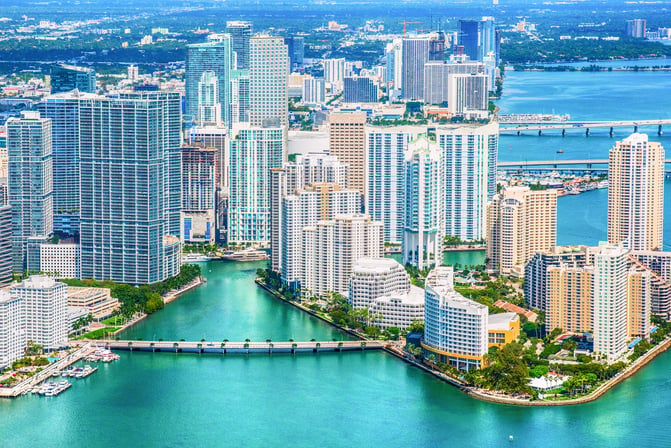Bridge Loan Rates: Current 2024 Interest Rates and Outlook

Many investors use bridge loans to get the funding they need quickly. As short-term loans, these instruments often have higher-than-average interest rates compared to traditional loans to protect lenders. Those interest rates can impact whether bridge loans are wise options for your financial goals.
Today, let’s look at current bridge loan interest rates and explore how they’ve evolved.
What Are Bridge Loans?
In real estate investing, bridge loans are short-term loans meant to “bridge the gap” for investors seeking more permanent financial stability or longer-term loans. In order to qualify for a bridge loan, borrowers must have a strong financial profile and a solid exit plan. Additionally, the lender must believe you can make consistent monthly interest payments. Bridge loans terms are usually 12-36 months, with the possibility to pay off earlier without a prepayment penalty in most cases.
For example, imagine you're an international investor looking to purchase a luxury property in South Florida. While your long-term loan is delayed due to a detailed underwriting process, the property you want is attracting multiple offers and won’t stay on the market for long. A bridge loan from Vaster allows you to secure the property quickly. Once your long-term financing is finalized, you can use it to repay the bridge loan, ensuring you don’t miss out on the investment opportunity.
A short-term bridge loan provides the short-term liquidity you need to act quickly on prime opportunities, particularly in competitive markets like South Florida. Once your permanent financing is secured, you can repay the bridge loan without sacrificing the chance to acquire high-value assets. This makes bridge loans a strategic tool for investors looking to secure properties that may not wait for traditional financing timelines.
Uses for Bridge Loans
Bridge loans are designed for real estate investors who need flexible, short-term financing solutions. Here are some key ways to use bridge loans:
- Seizing Investment Opportunities: When you need to act quickly on a prime investment property, such as a multifamily building or commercial asset, that’s likely to be taken off the market soon.
- Refinancing Existing Investment Properties: Bridge loans can help investors refinance existing properties, providing liquidity to fund additional investments or enhance cash flow.
- Strategic Financing for Real Estate Investors: Bridge loans are ideal for investors seeking short-term funding to bridge the gap until permanent financing is secured, whether for acquisitions, property improvements, or transitioning between loans.
As interest rates shift, demand for refinancing is expected to rise, especially as investors look to exit higher-priced loans taken out in recent years. Bridge loans offer a flexible, timely solution in today’s evolving market.
What Are Bridge Loan Rates Right Now?
Generally, bridge loans have higher interest rates compared to longer-term loans because lenders take on additional risk. Bridge loan rates are typically between 10% and 12%, depending on factors such as the asset’s location and the loan terms. Loans for vacant land parcels usually fall on the higher end of the range due to the increased risk of lending on non-income-producing properties. Additionally, the higher the loan-to-value, the higher the interest rate.
Bridge loan rates are tied to the asset itself, unlike bank loans that are often tied to the borrower’s income or other assets. In previous cycles, banks were more bullish and flexible with their lending requirements, creating numerous debt opportunities.
However, in 2024, private lenders have emerged as viable alternatives, offering more efficient and transparent origination processes. The perception of increased costs is less pronounced than in previous cycles due to the current high-interest rate environment.
What Were Bridge Loan Rates in the Past?
Bridge loans haven’t always been this high. In fact, bridge loan rates were lower prior to the pandemic, with rates between 7% and 9% on average in early 2022. As LIBOR began to rise, bridge loan rates increased accordingly. The recent inflationary cycle, coupled with the Federal Reserve’s interest rate hikes, caused bridge loan rates to climb significantly.
LIBOR and SOFR: Understanding the Transition
Bridge loan rates are heavily influenced by benchmark interest rates, particularly LIBOR (London Interbank Offered Rate) and SOFR (Secured Overnight Financing Rate). Historically, LIBOR was the primary reference rate used by financial institutions worldwide to determine interest rates on various products, including bridge loans. LIBOR represents the average interest rate at which major global banks lend to one another.
The financial world has gradually transitioned to SOFR, which is now the leading benchmark for most U.S. financial instruments, including bridge loans. SOFR is considered a more secure and accurate rate as it is based on actual overnight transactions backed by U.S. Treasury securities.
Why SOFR Matters for Bridge Loan Borrowers
The shift from LIBOR to SOFR is significant for both lenders and borrowers. SOFR is seen as more reliable because it reflects real-world financial transactions, rather than estimations from banks. For borrowers, particularly those using bridge loans, this transition means their interest rates will be tied more closely to market fluctuations in the short-term lending space.
Since SOFR is tied to overnight borrowing costs, its fluctuations directly impact bridge loan rates. When the Federal Reserve raises or lowers interest rates, SOFR adjusts in response. During 2024, for example, bridge loan rates have been influenced by the Fed’s efforts to combat inflation, which led to a series of interest rate hikes. As SOFR rates increased, bridge loan rates followed suit, raising borrowing costs for investors and developers looking for short-term financing solutions.
Bridge Loan Rates in Florida and New York
Since 2020, bridge loan rates have risen with the overall market. While these rates remain elevated in 2024, borrowers and lenders have largely adapted to this pricing environment. Moving forward, we can expect bridge lenders to adjust rates downward as the market evolves to attract qualified borrowers, particularly for luxury assets in markets like South Florida and New York.
Looking ahead, we expect rate compression across all lending products as private lenders reduce the reliance on banks to meet market demand. Banks are expected to adopt a more conservative approach during this cycle, with private lenders continuing to play a significant role in filling the gap.
Factors Affecting Bridge Loan Rates in 2024
Bridge loan rates in 2024 are influenced by several factors, including:
Rising Cost of Capital: Private lenders have adjusted their pricing due to increased capital costs. The percentage increase in bridge loan rates compared to bank rates is not as significant as in previous cycles. Private lenders are now more competitive, particularly for deals requiring creativity and urgency.
The Federal Reserve’s Recent Rate Cut: The Fed's rate cut in September 2024 has already started to influence bridge loan rates. Inflation and unemployment, monitored closely by the Fed, have contributed to this rate cut, which has a trickle-down effect on lenders’ pricing strategies.
For example, at Vaster, we use the 1M SOFR benchmark to price loans, adjusting our rates as the market changes to remain competitive. This recent rate cut has helped reduce borrower risk by improving their ability to service debt. The increase in real estate transactions as a result of lower rates may also help stabilize and increase valuations in key markets, reducing lenders' risk exposure.
Local and Macro Market Trends: Higher fixed-income instrument returns have caused investors to expect higher returns on their bridge loans. The increase in SOFR is directly tied to the Fed’s policies, further influencing bridge loan rates.
Tips for Securing Favorable Bridge Loan Rates in Florida and New York
While bridge loan rates remain high, there are still strategies to secure favorable terms:
- Partner with a Specialized Lender: Seek out lenders who specialize in bridge loans for luxury or investment properties. They often understand the unique dynamics of these markets and can offer more tailored, competitive terms, especially when the asset quality is high.
- Leverage Strong Financials and Track Record: Presenting a strong financial profile and a proven track record of successful real estate investments can help negotiate better rates. Lenders may offer more favorable terms if they perceive you as a lower-risk borrower with experience.
- Utilize Cross-Collateralization: Maximize your borrowing power by using multiple properties or assets as collateral through a blanket loan. This not only secures larger loan amounts but can also lead to more favorable rates by reducing the lender's perceived risk.
- Negotiate Prepayment Flexibility: When negotiating terms, ensure the bridge loan includes prepayment flexibility. This allows you to pay off the loan early without penalties, helping you avoid higher interest costs later in the term.
- Build a Strong Exit Strategy: A well-defined exit strategy demonstrates your ability to repay the loan and reassures lenders of the short-term nature of the bridge loan. Highlighting your plan to transition to permanent financing or liquidate other assets can secure better rates.
Conclusion
As the market adapts to these new lending conditions, it’s more important than ever to choose a lender that understands your needs. At Vaster, we tailor private loan solutions to meet your goals and exit strategy, offering competitive bridge loan rates in today’s real estate market. Reach out today to get started with a no-obligation quick quote.
Sources:
What Is a Bridge Loan and How Does It Work, With Example | Investopedia
Effective Federal Funds Rate | New York Fed
Secured Overnight Financing Rate (SOFR) Definition and History | Investopedia
Be the first to know.
Get exclusive access to our latest insights and upcoming events

Sign up
Get first access to all of our industry articles, reports, and downloadable content.